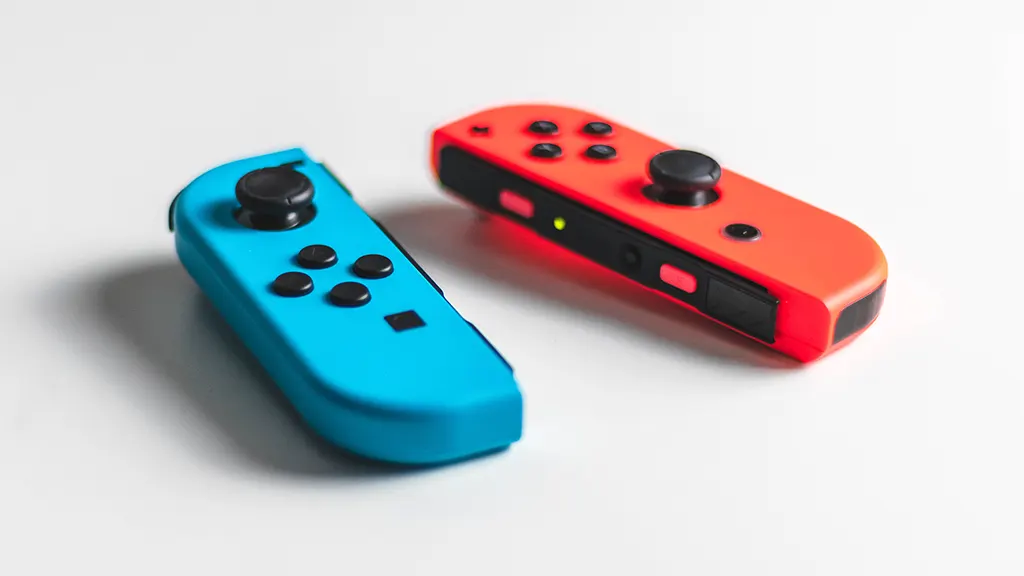What to do when your Nintendo Switch controller won't connect

Imagine this: You sit down to play Captain Toad®: Treasure Tracker and your Nintendo Switch® controller won't connect. If that sounds frustrating, well, it is. But we can help you quickly troubleshoot your Switch and get you back in the game.
At Asurion, when tech breaks, we fix it—whether your Nintendo Switch keeps crashing or your laptop won't connect to a hotspot. Here's our simple guide for what to do when your Nintendo Switch controller isn't connecting.
Why won't my Nintendo Switch controller connect?
There are many reasons your Nintendo Switch controller may not be connecting. Here are some of the most common reasons:
- Your Switch needs an update.
- Your device is in Airplane mode.
- You need to pair your Switch and controller.
- Your controller isn't securely attached to the console.
- Your controller is damaged.
- Your controller or console battery is dead.
How to fix a Nintendo Switch controller that won't connect
If your Joy-Con® controllers won't connect to your Switch, try these simple fixes to get them working again. And remember, you can always use your device's touchscreen until you get your controller working again.
Turn off Airplane Mode
If your Switch is in Airplane Mode, it'll turn off some functions and keep it from connecting to the controller. Try these steps to turn off Airplane Mode without using your controller:
- Tap the Home button on the touchscreen, then tap it three times get to the Home screen.
- Tap the gear icon, then tap it again to access System Settings.
- Tap Airplane Mode in the list of settings on the left, then tap the Airplane Mode setting on the right to turn it off.
Check for system updates
Your device should automatically download the most recent updates, but you can check for updates with these three steps:
- Make sure your console is online.
- Go to the Home menu, and select System Settings > System > System Update.
- If an update is available, it will download automatically.

It’s not game over—yet
If your console stops working, we’ll handle the repairs. Make an appointment, or visit your nearest store today.
Restart your Switch
If your console is already updated, but your controller still isn't working, try a simple restart by pressing and holding the Power button on your device for 3 seconds, tapping Power Options, then selecting Restart.
Confirm controller is paired with Switch
For your controller to work, you need to pair it with your Switch. If it's paired, one or more LEDs will show a solid light. If the LEDs are unlit, that means the system and the controller are not connected.
Unpair and re-pair your controllers
If you paired your controllers before the 12.0.0 update, you may need to unpair and re-pair them. Here's how:
- Go to Settings.
- Select Controllers and Sensors, select Disconnect Controllers, then press and hold the X button to unpair the controllers.
- To re-pair the controllers, you can simply attach them to the device. If that does not work, detach the controllers, select Change Grip/Order, and press the Sync button to pair them.
Turn on Pro Controller Wired Communication
If your Switch controller still won't pair, make sure Pro Controller Wired Communication is selected in Settings > Controllers and Sensors. If it's selected, try clearing the checkbox and selecting it again to see if this solves the problem.
Reset your controller
Try resetting your controller, or if you have more than one, try resetting one controller at a time.
- Detach the Joy-Con controllers from the side of the device.
- Take one of the controllers and press the small, pin-sized Sync button on the top or side, then press any other button on the controller to restart it.
- Repeat with the second controller.
- Firmly reattach both controllers to the console by snapping them securely into place.
- If this doesn't work, try detaching and reconnecting the controllers again.
- If the controllers still won't connect, if possible, try attaching a different controller to see if the one you're using is broken.
Check the maximum number of paired Switch controllers allowed
Typically, up to eight wireless controllers can be connected to a Nintendo Switch, but this may vary depending on the type of controller, its features, and your software. Check your owner's manual to be sure you haven't connected too many controllers.
Properly place and charge your controllers
For your controllers to connect to your Switch, they need to be charged.
You can charge the controllers by attaching them to the console while the console is attached to an AC adapter or resting in the dock.
Make sure to securely attach both controllers by sliding them down the side rails of the console from the top until they click into place on either side of the device screen.
Want to learn more? Check out our guide for what to do if your Nintendo Switch won't charge.
Check your controller's batteries
Make sure you've given your controllers time to charge (allow 6 hours or until the orange light at the top of the controller turns off). If they're still not connecting, you may need to replace the battery in your console or controller.
We recommend getting expert help for this Nintendo repair issue. Doing it yourself may damage your device and void your warranty.
If you've tried these steps and still need a little help, we're right around the corner. Schedule a repair at the nearest uBreakiFix® by Asurion store and our certified experts can get your device back up and running as soon as the same day.
The Asurion® trademarks and logos are the property of Asurion, LLC. All rights reserved. All other trademarks are the property of their respective owners. Asurion is not affiliated with, sponsored by, or endorsed by any of the respective owners of the other trademarks appearing herein.
- SHARE THIS ARTICLE
